Understanding Low EC Cocopeat and Its Benefits
The Science of Soil-less Growing – Understanding EC and Its Impact
When growing plants in soil-less systems like hydroponics or cocopeat-based media, it’s not just about giving roots a place to sit—it’s about creating the right chemical environment. One of the most important factors that determines plant health in these systems is Electrical Conductivity (EC). EC is the key measurement that tells you how much salt and mineral content is present in your growing medium or nutrient solution. Too high, and plants will struggle. If the EC is too low, plants won’t get enough of the vital nutrients they need to grow well.
Cocopeat, also referred to as coir pith or coir dust, is a product from the processing of the coconut husk. Due to its excellent water retention, aeration, and biodegradability properties, it is commonly utilized as a growing medium in agriculture and for horticultural purposes. Electrical Conductivity (EC) is one of the crucial features of cocopeat. Its salt content determines EC, which, in turn, also determines its market value.
A Low EC cocopeat block has undergone special processes that render it suitable for plant growth by significantly lowering its salt content. This agriculture growing medium coco pith harvested from the sea is high in sodium and potassium from seawater, thus requiring an extensive reduction in EC levels for agricultural use. Low EC coir pith is a medium of extended application in greenhouse farming, hydroponics, and soil amelioration, and assures a better growth environment for plants.
What is EC in Cocopeat?
Electrical Conductivity (EC) is basically a way to measure how many dissolved salts are present in a solution. In simple terms, it shows how well the medium conducts electricity, which directly depends on how many minerals or salts are dissolved in it.
For growers using cocopeat or hydroponic nutrient solutions, EC is the quickest way to check if the growing environment is balanced or not. A high EC reading in cocopeat usually means the material contains too much residual salt, often because of the way coconuts are naturally grown. Since many coconut palms thrive in coastal regions, they absorb sodium and chloride from seawater. If the husk isn’t processed well, those salts remain locked inside the cocopeat.
That’s why growers always rely on an EC meter—it’s a simple but critical tool for making sure the growing medium or nutrient solution is safe and effective for plants.
Coir pith’s EC can be affected by numerous factors, including:
-
The origin of the coconut husk
- The processing technique
-
The duration of exposure to seawater
- The washing and buffering processes
For agricultural purposes, low EC coir pith is preferable due to its neutrality towards the nutrients a plant can absorb. The most advocated EC level for low EC coco peat block is often lower than 0.5 mS/cm during the 1:1.5 water extraction procedure.
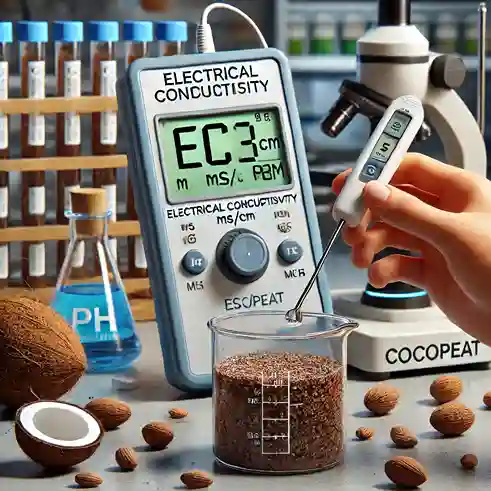
How to Make Low EC Cocopeat Block?
From Raw to Refined – The Art and Science of Processing Cocopeat
Raw cocopeat is a byproduct of coconut husks, but before it can be used effectively in horticulture, it must be treated properly. Many growers assume that a simple rinse with water is enough, but the reality is more complex. The real difference lies between washed and buffered cocopeat, and understanding this distinction is essential for achieving long-term stability and high yields.
Washed vs. Buffered Cocopeat – Why the Difference Matters
Washed Cocopeat
The most common first step is washing.Cocopeat is first washed thoroughly with fresh water to flush out loose salts and fine dust. This lowers the EC level to some extent and makes the medium safer than raw, untreated cocopeat.
But washing only tackles the salts that are loose and easily dissolved. It doesn’t solve the deeper chemical issue—the ions attached to the cocopeat’s internal structure.
The Science Behind the Problem
Cocopeat particles carry a negative surface charge, which gives them a high Cation Exchange Capacity (CEC). This allows them to pull in and hold onto positively charged ions, also called cations. Since many coconut plantations are coastal, raw cocopeat is often saturated with sodium (Na⁺) and potassium (K⁺) ions from seawater exposure.
Washing with water does not remove these bound ions. They stay stuck to the CEC sites, hidden inside the cocopeat structure.
When growers later add nutrient solutions containing calcium (Ca²⁺) and magnesium (Mg²⁺), a chemical swap occurs.This causes sodium and potassium to wash out into the solution, while essential calcium and magnesium end up trapped in the cocopeat. The result? Plants face calcium and magnesium deficiencies, even if growers are feeding them correctly.
Buffered Cocopeat
Buffering is the advanced treatment that solves this problem. Instead of just rinsing, the cocopeat is soaked in a buffering solution, usually made with Calcium Nitrate (Ca(NO₃)₂) or a mix of Calcium Nitrate and Magnesium Sulfate (Epsom salt).
Here’s what happens:
- In the buffering process, calcium ions push out sodium and potassium from the CEC sites.
- The displaced salts are then flushed out during a final rinse.
- The CEC sites become saturated with calcium, which is highly beneficial for plant health.
This process ensures that when plants grow in buffered cocopeat, the medium won’t interfere with nutrient uptake. The result is a stable, plant-ready substrate that supports healthy growth right from the start.
Washed vs. Buffered Cocopeat
| Characteristic | Washed Cocopeat | Buffered Cocopeat |
| Processing Method | Rinsed with water | Treated with Calcium/Magnesium solution |
| Target | Removes free salts | Removes bound Na⁺ and K⁺ ions from CEC sites |
| EC Level | Reduced but unstable | Consistently low and stable |
| CEC Status | Still saturated with Na⁺, K⁺ | Saturated with beneficial Ca²⁺ |
| Key Ions Present | Few free salts, high Na⁺/K⁺ bound | Few free salts, high Ca²⁺ bound |
| Plant Readiness | Needs Ca/Mg supplementation | Immediately ready for nutrient feeding |
This table highlights the difference clearly: washing helps, but buffering transforms cocopeat into a truly reliable growing medium.
Manufacturing Low EC cocopeat involves a series of steps to extract, wash, dry, and compress the raw material into blocks.
Steps to Produce LoW Ec Cocopeat
1: Collection and Extraction
- Cocopeat is obtained from coconut husks, which are first separated from the coconut shells.
- The husks are processed to extract coir fiber, leaving behind the cocopeat as a byproduct.
2: Sieving and Removal of Large Particles
- The raw cocopeat is sieved to remove coarse fibers and larger particles, ensuring uniformity in the final product.
3: Washing Process
- To reduce the EC level, the cocopeat is washed multiple times with fresh water.
- This helps to remove excess salts, particularly sodium and potassium.
- The water used for washing should be of good quality, ideally below 0.5 mS/cm EC.
4: Drying
- The washed cocopeat is then spread out in open yards or drying areas.
- It is sun-dried to remove excess moisture, reducing the chances of microbial growth.
5: Compression and Packaging
-
- The dried cocopeat is compressed into blocks using hydraulic pressing machines.
- These blocks are packed and stored for export or distribution.
Buffering – How to Prepare Cocopeat at Home
For growers who want more control or prefer preparing their own medium, buffering can be done manually. While commercial buffered cocopeat is widely available, many small-scale growers choose to process it themselves. Here’s a detailed step-by-step guide-
Buffering Guide for Cocopeat
| Step | Action | Materials/Proportions | Purpose |
| 1: Hydrate | Place a compressed block of cocopeat in a large container. Add 5–7 liters of clean water per kg of coco block.After expansion, use your hands to break the block into a soft, loose texture. | High-EC coco block, clean water (rainwater preferred) | Expands the block and prepares it for rinsing. |
| 2: First Rinse | Pour fresh water over the expanded cocopeat, stir, and drain completely. Repeat 3–5 times until runoff is clearer. | Fresh water, sieve/mesh | Removes dust and initial soluble salts. |
| 3: Prepare Buffering Solution | Mix 14 g Calcium Nitrate + 4 g Magnesium Sulfate in 5 gallons of water. | Calcium Nitrate, Epsom salt, water, gram scale | Creates a chemical solution that displaces Na⁺ and K⁺ ions. |
| 4: Soak & Exchange |
The cocopeat should be kept fully immersed in the solution for one to two days, with occasional stirring to ensure even treatment.
|
Hydrated cocopeat, buffering solution | Allows cation exchange, replacing harmful ions with Ca²⁺ and Mg²⁺. |
| 5: Final Rinse | Drain all the liquid and rinse with fresh water until the EC level drops below 0.5 mS/cm. | Fresh water, EC meter | Flushes displaced salts and confirms safe EC level. |
| 6: Dry (Optional) | If not using immediately, dry under shade or sunlight and store in a clean bag. | N/A | Reduces moisture, prevents microbial growth, and allows storage. |
By following this process, raw high-EC cocopeat can be converted into a high-quality medium that rivals commercially buffered products.
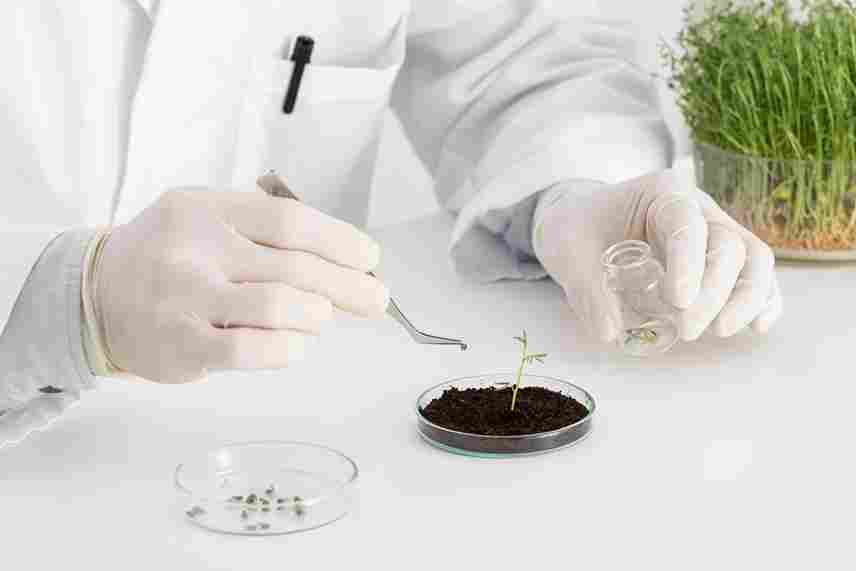
Advantages of Low EC Cocopeat
Why Low EC Cocopeat is the Best Choice for Sustainable Farming, Hydroponics
Using Low EC cocopeat offers several benefits, making it the preferred choice for farming and gardening applications. Some of its key advantages include:
low-EC cocopeat (below 0.5 mS/cm) provides a clean, stable base for plant growth. This is especially important for sensitive plants like flowers, leafy greens, and vegetables, which are highly vulnerable to salt damage.
The benefits of low-EC cocopeat include:
- Better Nutrient Uptake – With minimal salt interference, roots can freely absorb the nutrients supplied through fertilizers or hydroponic solutions. This ensures faster growth and stronger yields.
- Improved Water Retention and Aeration – Salt-heavy cocopeat often fails to hold water properly, leading to either waterlogging or drying out. Low-EC cocopeat keeps its structure intact, maintaining the right moisture balance and aeration for healthy roots.
- Precision and Flexibility for Growers – Low-EC cocopeat acts as a “blank canvas.” Since it doesn’t carry residual salts, growers have full control over what nutrients to add, tailoring feeding programs exactly to plant needs.
EC Levels and Their Horticultural Implications
| EC Range | Product Type | Suitability | Effects on Plants |
| < 0.5 mS/cm | Low EC | Excellent, universal use | Healthy root development and optimal growth |
| 0.5 – 1.0 mS/cm | Moderate EC | Good for mature plants | Minor salt stress may appear |
| > 1.0 mS/cm | High EC | Poor for most crops | Salt stress, nutrient lockout, root burn, stunted growth |
This table clearly shows why monitoring EC levels is non-negotiable in soilless growing. If the medium is too salty, plant growth slows down or stops altogether.
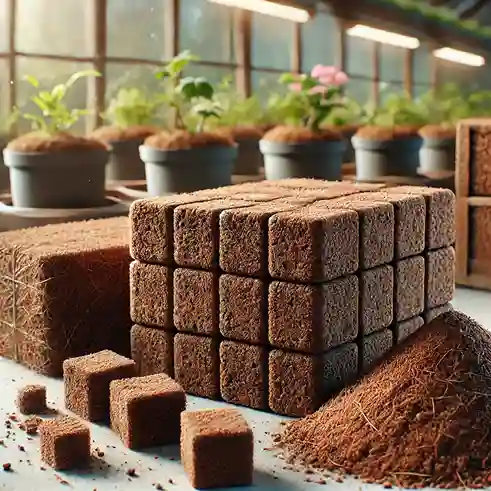
Plants That Require Low EC Cocopeat
Coir pith is essential for plants that are sensitive to high salt levels and require a neutral growing medium for optimal growth. It is widely used in hydroponics, greenhouse farming, nurseries, and soil conditioning.
Below are some categories of plants that thrive in Low EC cocopith
1. Fruits and Vegetables
Many fruiting and leafy vegetables require low salt levels in their growing medium to avoid nutrient imbalance and toxicity.
- Tomatoes 🍅 – Helps in root development and prevents salt stress.
- Cucumbers 🥒 – Requires a balanced pH and low EC for vigorous growth.
- Bell Peppers & Chili Peppers 🌶️ – Sensitive to high salt concentrations, leading to better fruiting in cocopith.
- Lettuce & Leafy Greens 🥬 – Prefers a neutral medium for maximum nutrient absorption.
- Strawberries 🍓 – Requires a well-drained, low EC growing medium to prevent root rot.
2. Hydroponic Crops
Low EC coir pith is a preferred soilless growing medium in hydroponic systems since it provides optimal water retention and aeration. Suitable hydroponic crops include:
- Lettuce, Spinach, Kale 🥬
- Herbs (Basil, Mint, Coriander, Parsley) 🌿
- Hydroponic Tomatoes & Peppers 🍅🌶️
- Cabbage & Broccoli 🥦
3. Flowering Plants
Many flowers are sensitive to salt buildup in the growing medium, making coir dust the best choice for:
- Roses 🌹 – Ensures healthier blooms and stronger root systems.
- Orchids 🌸 – Prefers a neutral, well-aerated medium.
- Gerbera Daisies 🌼 – Requires high water retention with low EC to avoid leaf burn.
- Chrysanthemums 🌻 – Sensitive to excess salts, leading to better growth in washed cocopeat.
4. Medicinal and Aromatic Plants
Medicinal and aromatic plants require a neutral, well-draining, and aerated medium for oil production and active compounds. Examples include:
- Aloe Vera 🌱 – Requires well-drained soil with minimal salt accumulation.
- Lavender 💜 – Prefers a slightly alkaline pH but is sensitive to salt buildup.
- Tulsi (Holy Basil) 🌿 – Grows well in cocopeat due to its moisture retention properties.
- Rosemary & Thyme 🍃 – Prefers low EC for better essential oil production.
5. Indoor and Potted Plants
Cocopith is widely used for indoor plants since it prevents salt buildup and improves root health. Suitable plants include:
- Snake Plant 🌿 – Requires a well-drained, neutral medium.
- Pothos (Money Plant) 💰 – Thrives in cocopeat due to high moisture retention.
- Spider Plant 🕷️ – Needs low EC to prevent browning of leaves.
- Peace Lily 🌸 – Prefers a balanced, aerated, and salt-free growing medium.
6. Seed Germination & Propagation
Low EC cocopith is widely used for seed starting and plant propagation since excess salts can inhibit germination and root growth. It is used for:
- Vegetable Seedlings 🌱
- Fruit Saplings (Mango, Papaya, Guava, etc.) 🍏🥭
- Tree Nurseries 🌳
- Hydroponic Seed Germination
Why Low EC Cocopeat is Important for These Plants?
Prevents Salt Stress – Excess salts can hinder plant growth and nutrient absorption.
✅ Supports Healthy Root Growth – Provides excellent aeration and drainage.
✅ Maintains Nutrient Balance – Does not interfere with nutrient uptake.
✅ Ideal for Hydroponics & Greenhouses – Works well in controlled environments.
✅ Boosts Yield & Quality – Ensures optimal plant health and productivity.
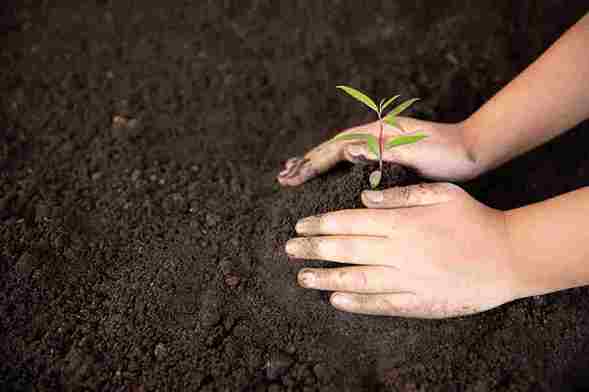
What is High EC Cocopeat?
The High-EC Problem in Raw Cocopeat
Cocopeat, also referred to as high EC coir pith is known for having a high salt balance due to being unwashed or lightly washed. It is often used in applications where salt levels don’t negatively impact the purpose, such as:
Animal bedding
Mushroom cultivation (in some cases)
Landscaping and erosion control
Industrial Absorbents
Specifications of High EC Cocopeat
-
EC Level: Typically over 1.0 mS/cm (in 1:1.5 water extract method)
-
Moisture Content: 15% to 20%
-
pH Level: 5.5 to 6.5
-
Compression Ratio: 5:1
-
Size of Blocks:
Common sizes include 5kg and 650g bricks
-
Organic Matter: 90% to 95%
Raw cocopeat often shows an EC reading above 1.0 mS/cm, and in some batches it may rise to 2.5 mS/cm or higher—a level that can be highly stressful for plants. For plants, this can be a serious problem. High EC means the root zone is filled with salts that block water and nutrients from being absorbed.
Here are the biggest risks of using high-EC cocopeat:
- Poor Seed Germination – Seeds and young seedlings are very sensitive to salt. Too much salt in the medium leads to poor seed sprouting, damaged roots, and weak early growth. If the first stage goes wrong, plants stay weak throughout their lifecycle.
- Nutrient Imbalance and Stunted Growth – High salt levels create an osmotic imbalance. This makes it harder for roots to absorb vital nutrients like nitrogen, phosphorus, and potassium. As a result, plants may suffer deficiencies, leading to wilting, yellow leaves, and stunted growth.
- Root Burn – Excess salts can physically damage the root system. When roots get burned, they can no longer move water and nutrients effectively, leaving the plant weak and unhealthy.
This “salt stress” is one of the most common reasons why plants fail when grown in untreated cocopeat.
Cocopeat with high EC cannot be used immediately for agriculture and requires extensive washing and buffering. Farmers and growers looking to use cocopeat for plant growth should ensure that they purchase Low EC coir pith.

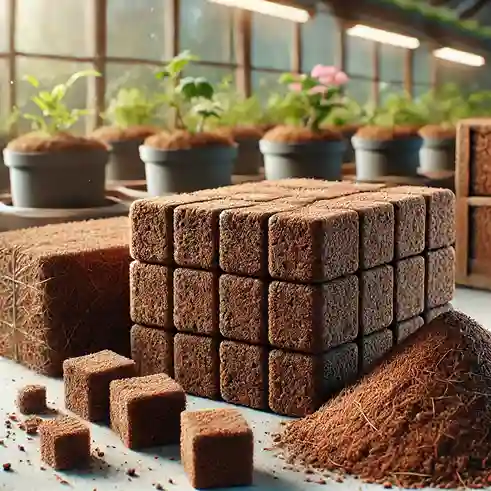
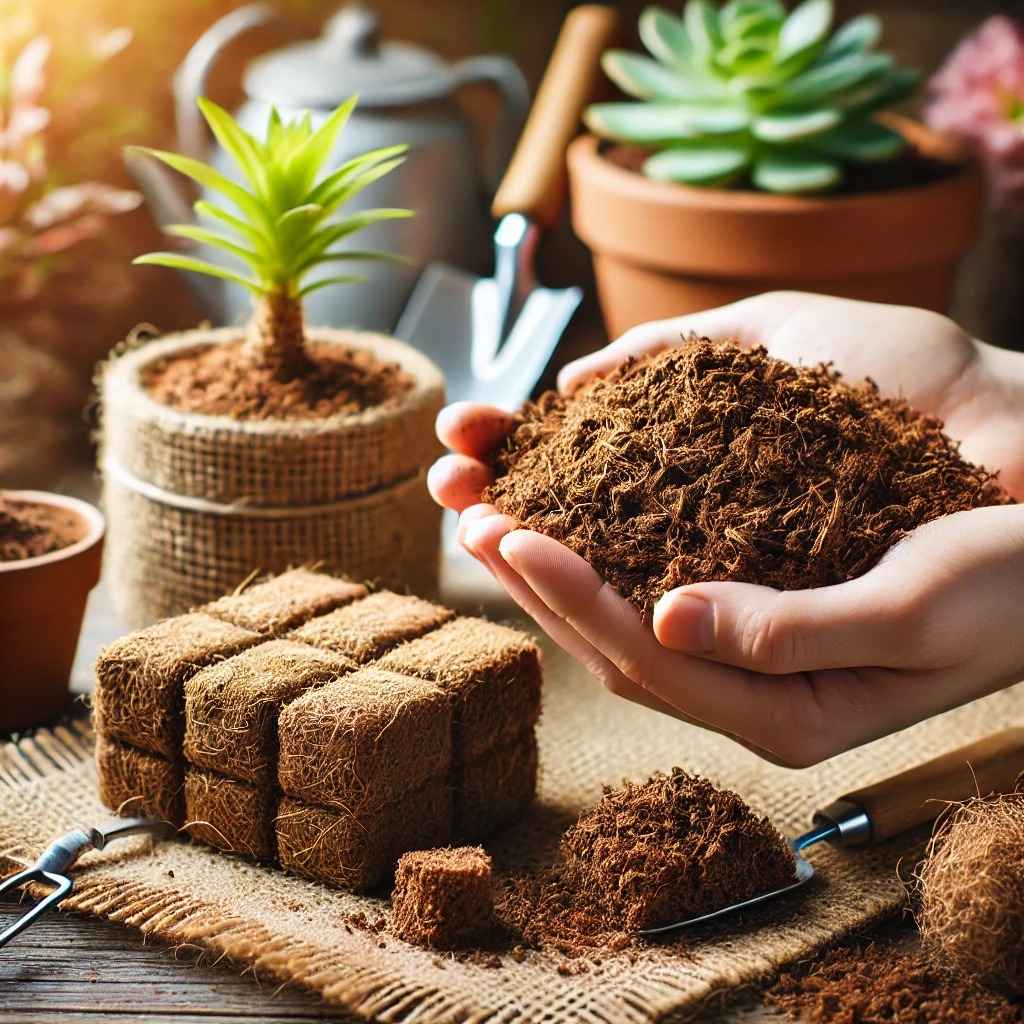
Difference Between High EC Cocopeat and Low EC Cocopeat
High EC Cocopeat Vs Low EC Cocopeat
| Feature | High EC Cocopeat | Low EC Cocopeat |
| EC Value | Above 1.0 mS/cm | Below 0.5 mS/cm |
| Salt Content | High, due to unwashed or minimally washed cocopeat | Low, due to multiple washings |
| Usage | Mainly used for industrial purposes, oil absorption, erosion control, or non-agricultural applications | Ideal for agriculture, hydroponics, greenhouse farming |
| Washing Process | Minimal or no washing | Thoroughly washed with fresh water |
| Suitability | Can be harmful due to excess salts | Best suited for plant growth |
Blocks of Low EC coco pith are important in modern agriculture, hydroponics and horticulture. Their salt content is low which helps the plants to grow and ensures there is proper root development as well as nutrient absorption. High EC coco pith does have some industrial uses, however, to avoid salinity problems, growers should always use og Low EC coco pith.
Having insight into the distinction of high and low EC coir pith and the processes involved in making them is beneficial for informed decision-making for agricultural and commercial purposes.
Always verify the EC values of the product you are purchasing. If your use case involves large scale greenhouse farming or small home gardening, Low EC cocopeat is perfect. For effortless plant growth, this truly is the best option.
Key Advantages of Using a Well-Prepared Cocopeat Medium
Transforming raw cocopeat into a fully buffered medium is more than just a technical step — it’s the foundation of a reliable, high-performing growing system. Once buffered, cocopeat becomes a premium substrate that not only supports healthy root growth but also gives growers greater precision and predictability. Let’s break down the key benefits of using properly processed cocopeat.
Superior Water Management and Aeration
One of cocopeat’s greatest strengths is its ability to balance water retention and air circulation.The fibrous, airy structure of cocopeat gives it the ability to retain up to eight times more water than it weighs when dry.. This ensures roots stay hydrated for longer periods, reducing the frequency of irrigation.
At the same time, its fibrous structure maintains porosity—tiny air pockets that provide continuous oxygen to the root system. This balance prevents two major problems:
- Waterlogging, which can suffocate roots and cause rot.
- Drying out too quickly, which stresses plants and reduces nutrient uptake.
For growers, this dual action translates to more consistent growth, healthier plants, and fewer issues related to overwatering or underwatering.
Enhanced Nutrient Absorption and Stability
Buffered cocopeat does more than just hold water — it creates a nutrient-friendly environment. Its high Cation Exchange Capacity (CEC) becomes saturated with calcium during the buffering process, which stabilizes the medium and ensures nutrients from fertilizers or hydroponic solutions remain available to plants.
This means:
- No nutrient lockout – Essential minerals like calcium, magnesium, nitrogen, and potassium remain accessible to the roots.
- Neutral pH balance – Buffered cocopeat usually has a pH close to neutral, preventing the acidity or alkalinity issues that often hinder nutrient absorption.
- Consistent feeding – Growers can trust that what they add to the nutrient solution actually reaches the plant, instead of being trapped in the medium.
The result is faster growth, stronger stems, and higher yields, even in demanding crops.
Healthy Root Development and Natural Disease Resistance
Roots are the lifeline of plants, and buffered cocopeat provides the ideal environment for them to thrive.Its soft, airy structure allows roots to grow deep and branch out with ease. A stronger root system means plants can absorb more water and nutrients, making them resilient against stress.
Additionally, cocopeat has natural antifungal properties. This reduces the risk of soil-borne diseases such as damping-off, which commonly affect seedlings. By protecting the root zone naturally, cocopeat minimizes the need for heavy chemical fungicides.
In short: buffered cocopeat not only helps roots grow better but also helps them stay healthier.
Sustainable and Reusable
Another advantage of cocopeat is its eco-friendly origin. It’s a renewable byproduct of the coconut industry and a sustainable alternative to non-renewable materials like peat moss. By using cocopeat, growers support recycling and reduce pressure on natural ecosystems.
On top of that, cocopeat can be reused across multiple growing cycles. After one crop, it can be cleaned, re-buffered, and used again, making it cost-effective over time.
However, there’s a catch: simple washing after reuse only restores part of its function. Over time, the medium loses its ability to hold nutrients and water effectively. For true reusability, cocopeat should be:
- Re-buffering – done to bring calcium levels back to normal and flush out the sodium and potassium that have built up.
- Treated with a non-ionic surfactant – This restores water absorption and prevents hydrophobic behavior.
This extra care ensures that cocopeat remains a premium medium not just for one crop cycle, but for several.
Versatile Uses for Growers of All Kinds
Properly treated cocopeat has become a go-to choice thanks to its ability to suit many different growing methods. Its adaptability makes it equally useful for home gardeners, urban balcony growers, and large-scale commercial farms. Whether you’re growing herbs by the window or running a full-scale hydroponic farm, well-prepared cocopeat adapts easily to your system.
Container Gardening and Potting Mixes
For container gardening, cocopeat is a true game-changer. Its lightweight nature reduces the overall weight of pots, which is especially helpful for rooftop gardens and balcony setups where load capacity is limited.
But it’s not just about weight. Cocopeat’s fine texture and ability to hold water evenly make it an excellent base for potting mixes. When blended with other materials like perlite, vermiculite, or compost, it creates a customized medium that supports a wide range of plants.
- Houseplants – Consistent moisture without waterlogging.
- Balcony vegetables – Retains nutrients and prevents root-bound stress.
- Flowers – Provides both stability and aeration for vibrant blooms.
Because it is pH-neutral, buffered cocopeat can adapt well to many different plant types, making it a flexible choice for everyday gardeners.
Precision Hydroponics
In hydroponic systems, precision is everything. The nutrient balance has to be carefully managed, and any disruption can drastically affect yields. This is why buffered cocopeat is a must-have.
When cocopeat isn’t buffered, it releases sodium and potassium into the solution, upsetting the nutrient balance. This constant disturbance can trigger nutrient shortages, excesses, and overall plant stress.
With buffering, cocopeat becomes an inert and balanced base that protects crops from nutrient issues. In hydroponics, it is often combined with materials like coir chips or perlite to optimize drainage and aeration. The result is a medium that:
- Maintains stable nutrient levels.
- Prevents lockout and salt buildup.
- Supports predictable, high-yield harvests.
For commercial hydroponic growers, buffered cocopeat isn’t just convenient — it’s essential for long-term consistency and profitability.
Seed Starting and Seedling Success
Seedlings are delicate, and they need the right conditions to establish strong roots and healthy shoots. For seedlings, buffered cocopeat is ideal since it’s lightweight, free from pathogens, and maintains a low EC.
Benefits for seedlings include:
- High germination rates – Even moisture encourages seeds to sprout quickly.
- Protection from salt toxicity – Low EC ensures that fragile roots aren’t burned.
- Fungal resistance – Natural antifungal properties reduce the risk of damping-off disease, which often kills young seedlings.
Whether you’re starting vegetables, flowers, or herbs, cocopeat gives seedlings a head start by creating a safe, supportive environment during their most vulnerable phase.
The Future of Responsible Growing
From raw coconut husk to a refined, high-performance growing medium, cocopeat showcases how sustainability and science can work together. It’s a renewable, eco-friendly alternative to peat moss, but its full potential is only realized when it’s properly processed and buffered.
The difference between washed and buffered cocopeat is more than technical — it defines whether plants will struggle or thrive. Washing only removes surface salts, while buffering addresses the deeper chemical issues, ensuring nutrient stability and plant health.
For modern growers — whether at home or on a commercial scale — choosing buffered cocopeat means committing to:
- Precision – predictable nutrient control.
- Consistency – healthier plants and stronger yields.
- Sustainability – using a renewable resource responsibly.
Buffered cocopeat represents not just a growing medium, but a foundation for the future of sustainable agriculture. It offers reliability, versatility, and performance that can support gardeners and farmers worldwide in growing healthier, more productive crops.

